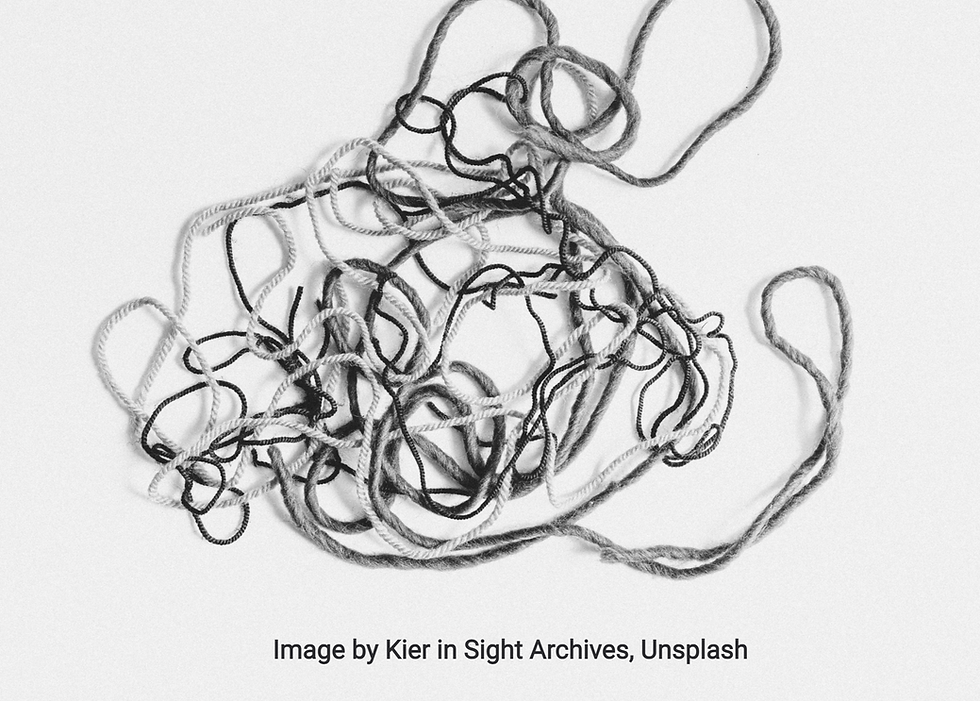After the Strike
- Louise Carnachan

- Nov 14, 2023
- 3 min read

The adjoining conference rooms opened into one weird L shape. Seating was available but not one of the thirty people took a chair; they stood solemnly against the walls, not looking at each other, just at me. There was complete silence. I pulled a chair into the middle of the space and sat down. The whole situation was so uncomfortable I figured I might as well be, too.
“Thank you for coming,” I said. “We’ll go around the room, and you’ll have up to two minutes to speak. No interruptions, please, unless you can’t hear someone. Each of you had a unique experience and we’re here to listen without commentary. The question to address is, ‘What happened for you during the strike?’ Please focus only on what happened for you.”
These folks had returned to work that very day after a prolonged walkout at a healthcare institution. Some of them had crossed picket lines out of financial necessity or values conflict. Others in the room had marched for equally valid reasons. There had been judgments made about each other’s choices. I wasn’t sure anyone would speak up, but to my surprise everyone told their story. There were some tears and a lot of deep listening.
As I watched a recent strike unfold, it signaled not only the fracture between management and labor but potentially among peers as well. A strike is not a frivolous exercise or the opening salvo in a negotiation. To get to that point happens over time. First, there’s the buildup of labor dissatisfaction and the determination that management’s response has been inadequate. Eventually, there’s a union vote, the labor action itself, negotiations and more votes until finally there’s a contract. Then there’s the aftermath.
To this day, the memory of bearing witness to thirty profoundly personal stories brings tears to my eyes. The rebuilding of trust requires time and empathy. I had hoped that a degree of the latter would be fostered by listening to the many truths expressed. It was a large healthcare system and I visited only one site. How each location handled return to work was different. Later, I learned that the group I’d met with had coalesced into a functioning team more rapidly than others where there had been no opportunity to share one’s story. It was another reminder that being heard is critical.
For those of us on the sidelines of a labor dispute, it’s easy to pass judgment. But it’s sorta like a marriage, you don’t really know what’s going on unless you’re one of the parties. So, if you’re not involved personally, become educated about all sides. Don’t assume you know the issues or who is “wrong” because things may not be as black and white as news reports would indicate.
If you are one of the people on the inside of a labor dispute, here are some thoughts about recovery.
There are no bromides to ameliorate relationships. After the ink is dry and everyone’s back to work (regardless of the number of days folks were out), don’t be surprised if it takes quite a while to return to “normal.”
Be open to hearing about what others lived through regardless of whether they had your role in labor or management or made the choices you made.
Allow healing to occur by not holding or fostering grudges.
Look for demonstrations of goodwill rather than searching for evidence of betrayal.
Remember that the most important thing you can do is to listen to other’s perspectives. Please encourage your coworkers to do the same.
Regardless of your job title, if you decide to make inquiry and listening fundamental practices, perhaps you will be able to assist in the prevention of a future painful episode. Please know I am holding good thoughts for you as you rebuild and recover.



Thanks for another great post, Louise. I think your focus on stories and listening is spot on. Sharing first-person stories brings humanity to a discussion and this makes it easier to listen to and understand other perspectives.